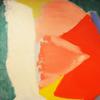Frist Art Museum Presents "Creating the American West in Art"
- NASHVILLE, Tennessee
- /
- January 26, 2021
The Frist Art Museum presents Creating the American West in Art, an exhibition of nearly 80 paintings and sculptures ranging in date from 1822 to 1946 and made by such notable artists as Albert Bierstadt, Thomas Moran, Frederic Remington, Charles Marion Russell, E. Irving Couse, Robert Henri, John Sloan, and Maynard Dixon. Drawn from the Petrie Institute of Western American Art at the Denver Art Museum, the exhibition will be on view at the Frist from March 5 through June 27, 2021.
For many, the words “American West” have long conjured a concept as much as a location. Throughout the 19th and 20th centuries, depictions of the people, landscapes, and wildlife of the West fostered a sense of American identity that was rooted in a pioneering spirit of adventure and opportunity. This exhibition offers the occasion to explore the nuances of a complex American West, including its often-challenging history—especially regarding the forced displacement of Native Americans—and its vibrant and diverse natural beauty.
“As our vision is to use art to encourage our guests to see the world in new ways, we often collaborate with members of various communities to assist in broadening views of the subject matter,” says Frist Art Museum curator Katie Delmez. In preparation for the fall 2019 presentation of Hearts of Our People: Native Women Artists, the Frist worked with members of their local Indigenous community to form an advisory group. “Because Indigenous figures and culture are represented in works of art made by Euro-American artists in Creating the American West in Art, we invited several of our advisers to offer their perspectives on what is depicted,” says Delmez. “In foregrounding Indigenous voices, we hope our guests will consider a more inclusive narrative of the works in this exhibition.”
Most of the artists represented in this exhibition spent years studying in Europe—predominantly Italy, Germany, and France. They returned to the United States, however, determined to distinguish themselves through uniquely American subjects. “Depictions of the West made in an array of styles over the course of 150 plus years crystallized key components of American history and mythology, including the concepts of manifest destiny and American exceptionalism,” says Delmez.
Organized chronologically into five sections, the exhibition begins with a focus on the widespread curiosity about the vast wilderness and its Indigenous inhabitants during the age of artist-explorers. Figures like Alfred Jacob Miller, who first journeyed westward in 1837, hoped to re-create elements of what he saw for audiences on the East Coast and in Europe. William Jacob Hays, a noted naturalist, was interested in recording the physical characteristics of bison in his 1862 painting Herd of Buffalo, placing his subject in a hazy, otherworldly atmosphere.
The second section analyzes how sublime western landscapes offered hope for national unification after the horrors of the American Civil War. Large-scale paintings by Albert Bierstadt and Thomas Moran revealed the magnificence of lands seemingly unspoiled by human intrusion. But by the turn of the 20th century, railroads and barbed wire fences had ended the open-range cattle era of the American West. A third grouping in the exhibition considers the nostalgia for and memorialization of a seemingly nobler West seen in works by artists such as Frederic Remington and Charles Marion Russell.
The final two sections look closely at the role of the West within the development of American modernism. “In part because of the outbreak of World War I and the closure of international borders, many American artists came West for source material, lured especially by the bright, arid environment of New Mexico,” writes Delmez. There, in 1915, Ernest Blumenschein, E. Irving Couse, Oscar E. Berninghaus, Bert Phillips, and others formed the Taos Society of Artists, a colony devoted to studying both the Native American and Hispanic cultures living in the desert landscape.
“For artists interested in innovative forms of visual expression, the American West maintained its prominence as a source of inspiration in the twentieth century,” writes Delmez. “Its dramatic physical geography and bold light lent themselves to more abstracted styles pursued by a new generation of artists, from Thomas Hart Benton to Marsden Hartley.”
Exhibition Credit
Organized by the Petrie Institute of Western American Art, Denver Art Museum.
Exhibition Catalogue
The American West in Art: Selections from the Denver Art Museum showcases the collection of the Petrie Institute of Western American Art. This beautifully illustrated companion volume to the exhibition features twenty-two essays that lead the reader through the history of western American art, from artists’ journeys to the West in the 1800s to the modernism of the 1930s and 1940s. A prologue by Dan Flores (University of Montana) and an epilogue by Erika Doss (University of Notre Dame) frame historical and contemporary perspectives by Denver Art Museum’s Thomas Brent Smith, Jennifer R. Henneman, and Molly Medakovich. The retail price is $45. Frist Art Museum Members receive a 10 percent discount on most gift shop purchases.
Supporter Acknowledgment
Silver Supporter: The Sandra Schatten Foundation
The Frist Art Museum is supported in part by the Metro Nashville Arts Commission, the Tennessee Arts Commission, and the National Endowment for the Arts.
Connect with us @FristArtMuseum #TheFrist #FristAmWest
About the Frist Art Museum
Accredited by the American Alliance of Museums, the Frist Art Museum is a 501(c)(3) nonprofit art exhibition center dedicated to presenting and originating high-quality exhibitions with related educational programs and community outreach activities. Located at 919 Broadway in downtown Nashville, TN, the Frist Art Museum offers the finest visual art from local, regional, national, and international sources in exhibitions that inspire people through art to look at their world in new ways. Information on accessibility can be found at FristArtMuseum.org/accessibility. Gallery admission is free for visitors ages 18 and younger and for members, and $15 for adults. For current hours and additional information, visit FristArtMuseum.org or call 615.244.3340.

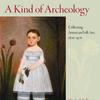

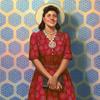
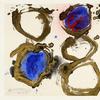
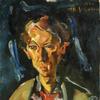
10100x100_c.jpg)




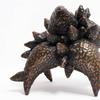


![Peter Paul Rubens (Flemish, 1577–1640), After Titian (Tiziano Vecelli) (Italian [Venetian], c. 1488–1576), Rape of Europa, 1628–29. Oil on canvas, 71 7/8 x 79 3/8 in. Peter Paul Rubens (Flemish, 1577–1640), After Titian (Tiziano Vecelli) (Italian [Venetian], c. 1488–1576), Rape of Europa, 1628–29. Oil on canvas, 71 7/8 x 79 3/8 in.](/images/c/e2/2e/Jan20_Rape_of_Europa100x100_c.jpg)

